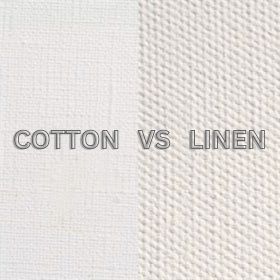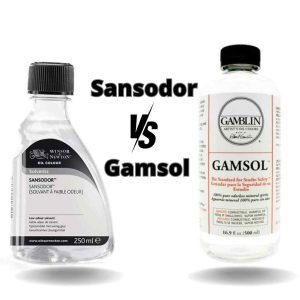Artists are faced with a lot of options when it comes to selecting the right canvas for their artwork. It can be overwhelming, but choosing the right canvas is crucial because it affects the overall quality and longevity of your piece.
A good canvas will ensure that your artwork looks great for years to come, while a poor one can cause fading, cracking, and deterioration over time.
Cotton and linen canvas are two of the most popular options for artists, and a comparison of Cotton vs Linen Canvas is often a topic of debate.
In this article, we will explore the importance of selecting the right canvas, the differences between cotton and linen canvas, and factors to consider when choosing between the two.
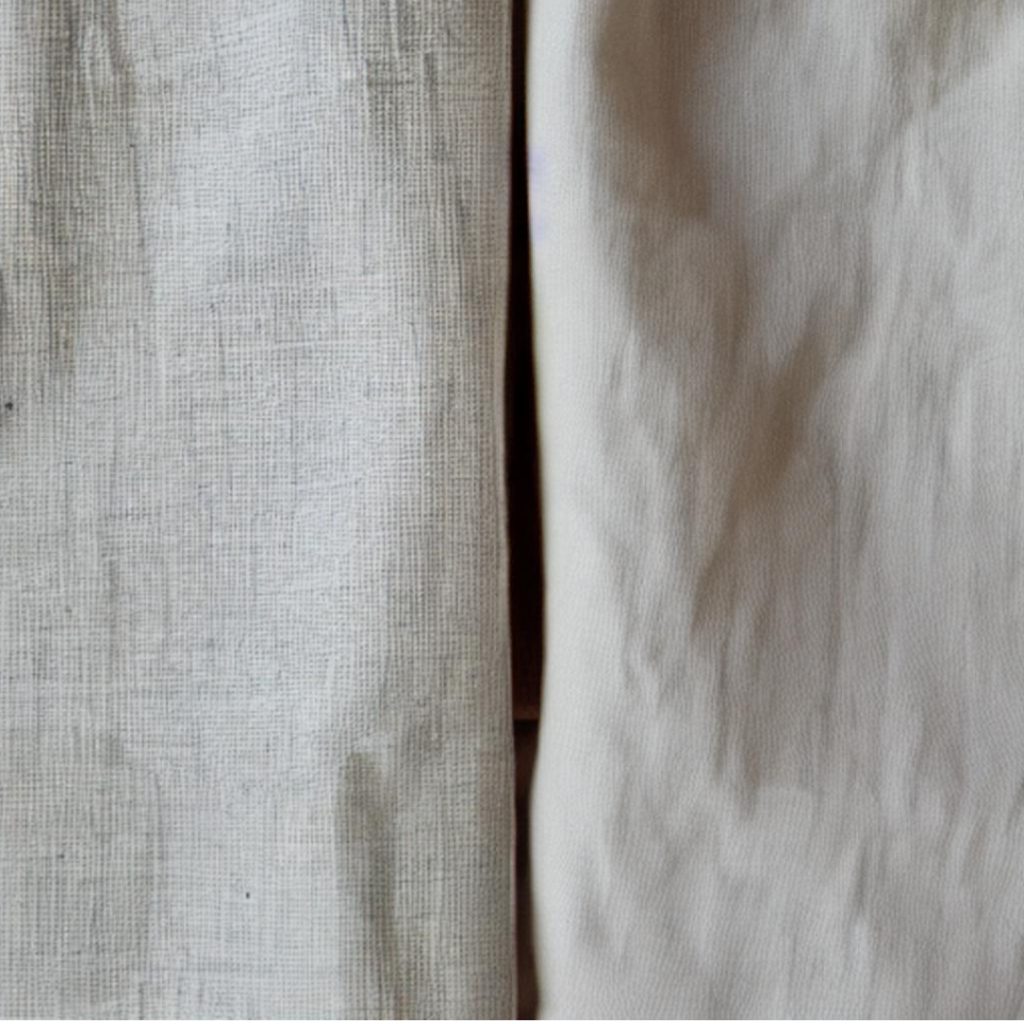
So, here’s a comparison table for cotton and linen canvas for your ease of access:
| Factor | Cotton Canvas | Linen Canvas |
| Texture and appearance | More textured and rustic | Smoother and polished |
| Stretching and priming | Easy to stretch and prime, may require additional priming for oil paints | Colorfastness |
| Durability and longevity | Not durable, and can sag over time | More durable, resists sagging and stretching over time |
| Price and availability | More affordable and widely available | More expensive and harder to find |
| Suitable painting technique | Great for beginners and a wide variety of techniques | Suitable for a variety of painting techniques |
| Good color fastness is possible with high-quality cotton canvas | More absorbent allows for more blending and layering of paint | Good color fastness is possible with high-quality cotton canvas |
| Environmental impact | Less eco-friendly, high water and pesticide usage involved in farming | More eco-friendly, made from a renewable resource (flax) and requires less water and pesticides to grow |
| Absorbency | More absorbent, allows for more blending and layering of paint | More absorbent allows for more blending and layering of paint |
| Weight | Generally lighter, important for larger canvases or transportation | Generally heavier |
Cotton vs Linen Canvas: Which is the Better Choice?
Cotton canvas is a better choice for fine art due to its superior durability and flexibility, while linen canvas is a more expensive but higher-quality option favored by professional artists for its finer texture and longevity.
Durability and longevity
Linen canvases are considered to be more durable and long-lasting than cotton canvas. The fibers in linen canvas are stronger and more resilient than those in cotton canvas.
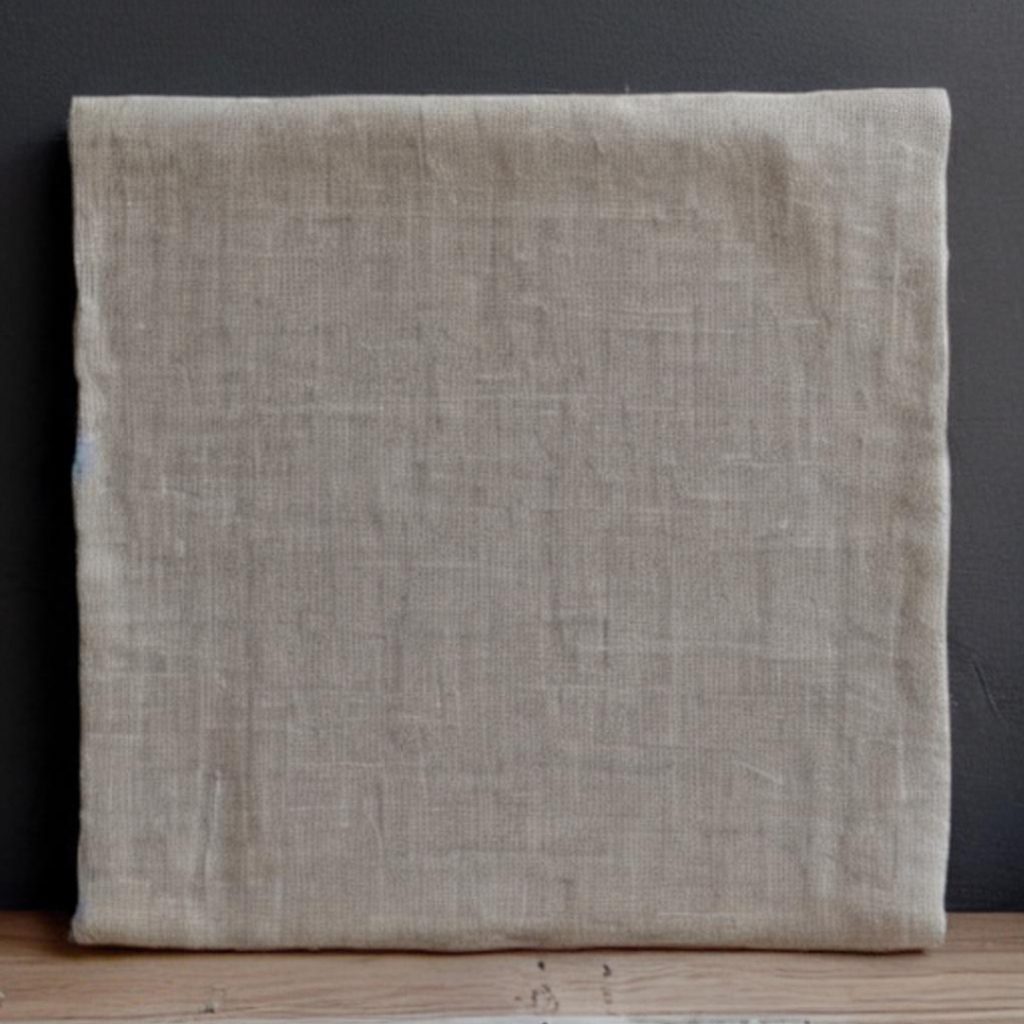
Its tighter weave and sturdier threads allow it to resist sagging and stretching over time, making it ideal for larger and heavier paintings.
On the other hand, cotton canvas may sag over time, especially if it is not stretched properly. This can be especially problematic for artists who create large-scale works or those who work with heavy paint.
However, both types of canvas can last for many years with proper care and maintenance.
Texture
The texture of the canvas can have a significant impact on the overall appearance of the artwork.
Cotton canvas has a more noticeable texture due to its larger weave, creating a more rustic and organic feel. In contrast, linen canvas has a smoother surface with a tighter weave, producing a more polished and refined appearance.
Appearance
Cotton canvas is a popular choice due to its affordability and versatility. It has a smooth surface texture and a warm, slightly yellowish tint that adds depth and warmth to the artwork.
Cotton is also more absorbent than linen, which can impact how paint is applied and absorbed into the fibers. This absorption can result in brighter colors and a more luminous finish, giving the artwork an overall vibrant and energetic feel.
In contrast, linen canvas has a more natural and textured surface that adds a level of authenticity and depth to the artwork. It is more expensive than cotton but is known for its high quality and durability.
Linen has a cooler tone than cotton, which can impact how colors are perceived. Its tighter weave and lower absorbency allow for a more controlled application of paint, resulting in more precision and detail in the artwork, adding a level of sophistication and refinement.
Stretching and priming
Both cotton and linen canvas can be stretched and primed for painting. But cotton canvas can be stretched with ease, while linen canvas may need extra attention to avoid distortion or stretching due to its tighter weave.
Similarly, priming requirements differ between the two types of canvas, with linen canvas requiring more layers of primer to achieve a smooth surface compared to cotton canvas.
Both Cotton and Linen canvases may require additional priming for oil paints to prevent the oil from seeping into the fibers and causing the canvas to degrade over time. This can be time-consuming and may require the use of specialized materials.
Price and availability
One of the significant differences between cotton and linen canvas is their price and availability. Cotton canvas is generally more affordable and widely available, making it a popular choice for beginners or artists who are working on smaller or less detailed pieces.
In contrast, linen canvas is more expensive due to the higher cost of materials and the additional effort required in the weaving process. It is also harder to find in stores, making it a less accessible option for some artists.
Choosing the Right Canvas for Your Artwork
Choosing the right canvas for your artwork can greatly impact the outcome of your painting. Consider the type of painting you’ll be creating, as different techniques require different types of canvas.
For instance, oil painting requires a primed canvas that can withstand the oil without deteriorating, while acrylic and watercolor paintings can be done on unprimed canvas or paper.
Here are a few factors to consider:
Type of artwork: Size, weight, subject
The type of painting you will be working on is an essential factor when choosing the right canvas.
For instance, if you are working on a heavily textured piece or a large painting, linen canvas may be a better option due to its strength and durability. If you are working on a smaller, smoother piece, cotton canvas may suffice.
Additionally, the subject matter of your painting can influence your choice of canvas. If you are working on a portrait, you may prefer the smoother surface of cotton canvas.
Type of paint: Acrylic or oil?
Your painting technique can also affect your choice of canvas.
For example, if you are using oil paints, linen canvas may be better due to its ability to absorb the oils.
However, if you are using acrylics, cotton canvas may be a better choice. The absorbency of the canvas can affect the texture and final appearance of the painting, so it’s important to choose a canvas that complements your painting technique.
Personal preference: Texture, aesthetic
Another important factor to consider when choosing the right canvas for your artwork. Some artists prefer the texture of linen canvas, while others may prefer the smoother surface of cotton.
It’s essential to experiment with different types of canvas to find one that suits your style and preferences.
Your personal preference can also affect the aesthetic of your artwork, so it’s crucial to choose a canvas that you are comfortable working with.
Budget
Budget is an important factor to consider when choosing the right canvas for your artwork. Linen canvas is typically more expensive than cotton, so if you are working on a tight budget, cotton may be a more affordable option.
However, it’s important to keep in mind that a higher-quality canvas can affect the longevity and overall appearance of your artwork.
If possible, it may be worth investing in a higher-quality canvas to ensure the best possible outcome.
Other factors to consider
When choosing the right canvas for your artwork include the level of stretch required, the weight of the canvas, and the environmental conditions in which your artwork will be displayed.
The level of stretch required can affect the overall appearance and stability of your artwork, so it’s important to choose a canvas that can withstand the tension of the stretcher bars.
The weight of the canvas can also affect the ease of transport and display.
Finally, the environmental conditions in which your artwork will be displayed can affect the longevity of the canvas and the final appearance of your artwork. It’s important to choose a canvas that can withstand the elements of your chosen display location.
Linen Canvas vs Cotton Canvas: Which is the Best for Beginners?
For beginners, cotton canvas is often the better choice due to its affordability and ease of use.
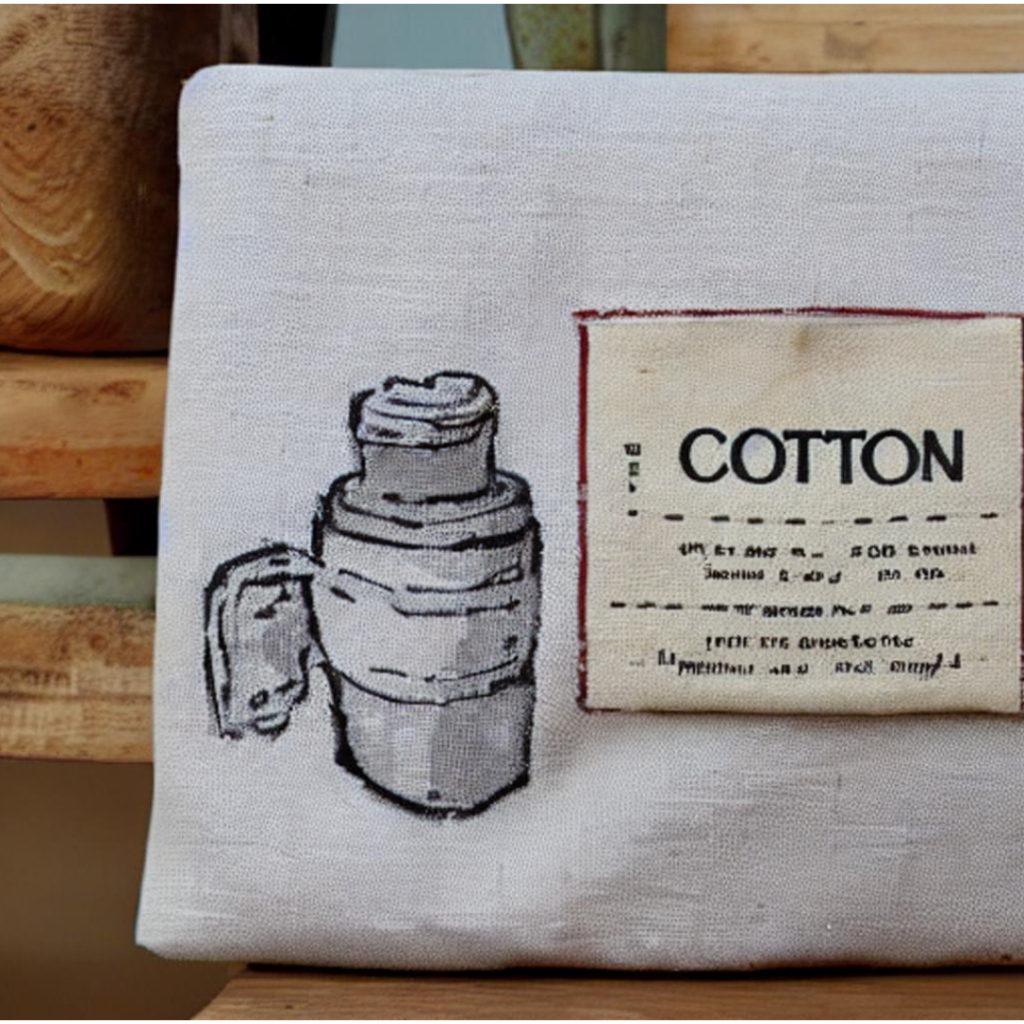
Cotton canvas is widely available and comes in a range of sizes and shapes, making it easy for beginners to find the right canvas for their needs. It’s also easy to stretch and prime, which makes it a great option for those new to painting.
While linen canvas is considered a higher-quality option, it can be more expensive and its rougher texture may be more challenging for beginners to work with.
Ultimately, the choice between cotton and linen canvas will depend on the individual artist’s preferences and budget, but for those just starting out, cotton canvas is often the best option.
Maintenance and Care of Cotton and Linen Canvases
When it comes to maintaining and caring for your cotton and linen canvases, there are a few things to keep in mind. Proper care can help extend the lifespan of your canvases and protect your artwork from damage over time.
Here are some tips for maintaining and caring for your cotton and linen canvases:
- Protect your canvas from direct sunlight and high humidity, which can cause the canvas to warp or become discolored over time.
- Avoid using harsh chemicals or cleaning solutions on your canvas, as they can damage the surface of the canvas and affect the integrity of your artwork.
- Store your canvases in a cool, dry place, away from direct sunlight and high temperatures. This can help prevent the canvas from becoming brittle or cracking over time.
- Avoid placing heavy objects on top of it as this may cause the canvas to stretch or become misshapen.
- Avoid rolling or folding your canvases, as this can cause creases or damage to the surface of the canvas.
- Use a soft, dry cloth to gently dust your canvas periodically, taking care not to apply too much pressure or force.
- If your canvas becomes dirty or stained, try using a soft brush or sponge to gently clean the surface with mild soap and water. Rinse the canvas thoroughly and allow it to dry completely before storing or using it again.
- For minor damages, such as small tears or scratches, you can use a touch-up paint or patch to fix the damage.
- For major repairs, such as structural damage or fading, it is best to consult a professional conservationist. They have the tools, materials, and expertise needed to restore your artwork to its original condition.
FAQs
- How do you prepare linen canvas for painting?
Before painting on linen canvas, it is important to prime it with several layers of gesso to create a smooth surface. First, sand the surface to remove any rough spots, then apply gesso with a brush or roller in even layers, allowing it to dry completely between each layer.
- Is there a significant difference in the appearance of artwork on cotton vs linen canvas?
Yes, the texture of the canvas can significantly impact the appearance of the artwork. Cotton canvas has a larger weave, creating a more rustic and organic feel, while linen canvas has a tighter weave, producing a more polished and refined appearance.
- Which is better for oil painting, cotton or linen canvas?
Linen canvas is generally considered to be better for oil painting due to its tighter weave and stronger fibers. This allows the canvas to withstand the weight of heavy paint and resist sagging or stretching over time.
- Can you paint on unprimed cotton or linen canvas?
While it is possible to paint on unprimed cotton or linen canvas, it is not recommended. The raw canvas fibers can absorb paint and cause it to bleed or fade over time. Priming the canvas with gesso creates a barrier between the fibers and the paint, resulting in a more stable and long-lasting artwork.
- Which canvas is more affordable, cotton or linen?
Cotton canvas is generally more affordable and widely available than linen canvas, making it a popular choice for beginners or artists who are working on smaller or less detailed pieces. In contrast, linen canvas is more expensive due to the higher cost of materials and the additional effort required in the weaving process.
- Which canvas is ideal for larger and heavier paintings?
Linen canvas is ideal for larger and heavier paintings due to its tighter weave and sturdier threads, which allow it to resist sagging and stretching over time. Cotton canvas may sag over time, especially if not stretched properly, which can be problematic for artists who create large-scale works or those who work with heavy paint.
Final Thoughts
In conclusion, when choosing the appropriate canvas for your artwork, it is essential to compare and evaluate the differences between cotton vs linen canvas.
Both cotton and linen canvas have their pros and cons, and each artist should consider their individual needs and preferences when making their selection.
Proper stretching and priming techniques, as well as careful canvas care and maintenance, will ensure that your artwork looks great and lasts for many years.
Don’t be afraid to experiment with different types of canvas and techniques, and always remember to have fun and enjoy the creative process!
Choosing the right canvas is just the first step. Learn how to prime a canvas without gesso to further customize your painting foundation.

